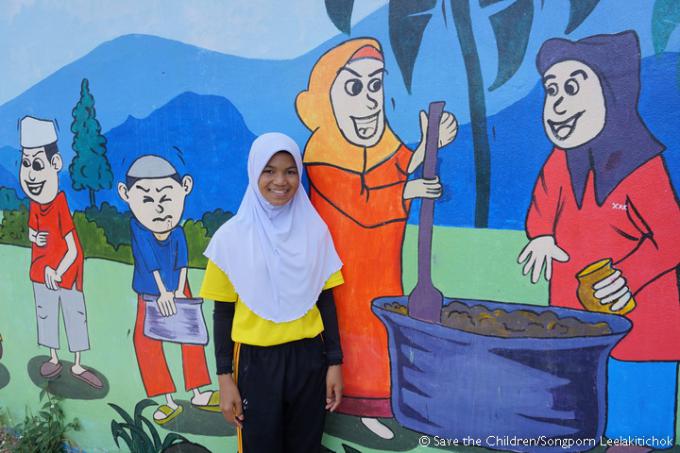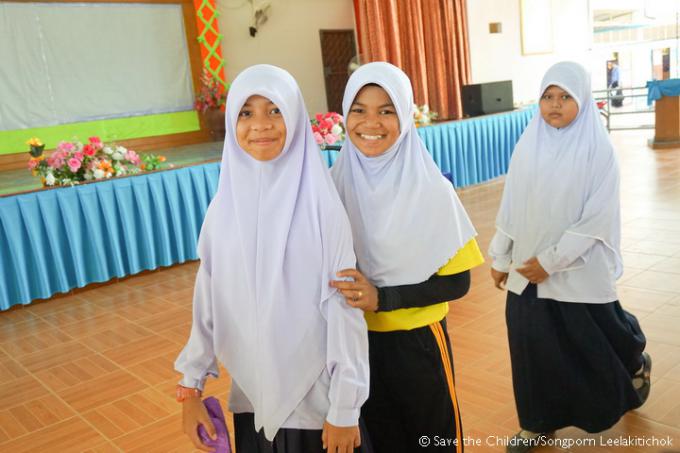LEARNING FROM SAVE THE CHILDREN, NARATHIWAT FLOOD-AFFECTED ARIINEE WILL PREPARE BETTER FOR THE NEXT FLOOD

By Songporn Bea Leelakitichok
When heavy rainfalls flooded the Southern Thailand in December 2014, many houses and schools in the affected areas of eight provinces were affected and some of the most of affected areas were flooded for a few weeks, including that of Suraiya Waedoyee (Ariinee), 12, too.

“It was raining non-stop for a few weeks. On Monday, I told my parents to start packing, and then on Wednesday the water level slowly rose and flooded the roads. I was afraid because centipedes and scorpions came with the floods,” said Suraiya Waedoyee (Ariinee), who lived in Bacho District of Narathiwat Province in Thailand.
The floods were seasonal but the amount of rainfalls was much more than the populations expected. According to the Department of Disaster Prevention and Mitigation, around 668,063 people in the 8 affected provinces were affected by the end of 2014. The top three most flood-affected provinces were the three Deep South provinces, i.e., namely, Pattani, Yala, and Narathiwat.
“It finally came inside our house and we had to move out. We couldn’t stay at home, so we stayed at the mosque at night,” added Ariinee.
There are 668,063 people in 8 provinces affected, at least 300,469 people in the three Deep South provinces (namely, Pattani, Yala, and Narathiwat) – the top three most flood-affected provinces. These include approximately 69,108 children. Although local authorities had mobilised their support in the form of relief kits and distributed in the affected areas, no specific assessment has been done apart from collection data on the damages.
To respond to the gap, Save the Children conducted needs assessment surveys and found that the relief kits mainly focused on household items, overlooking educational needs of children whose schoolbooks and uniforms were lost in the floods. Thus, Save the Children’s support for individual children by distributing school bags, school uniforms, and stationeries to replace those damaged by the floods for these children helped to encourage them to go to school and ease the extra burden of their families.

Save the Children also advocated for better disaster preparedness in schools and introduced how DRR practices can reduce the impacts of disasters especially for the schools that are located in flood-prone areas.
“During the floods, I used to enjoy playing in the flood water. These adults [Save the Children staff] told me that it was dirty and gave me this cute leaflet. Now I know how to prepare better next time and deal with the floods,” Ariinee ended.